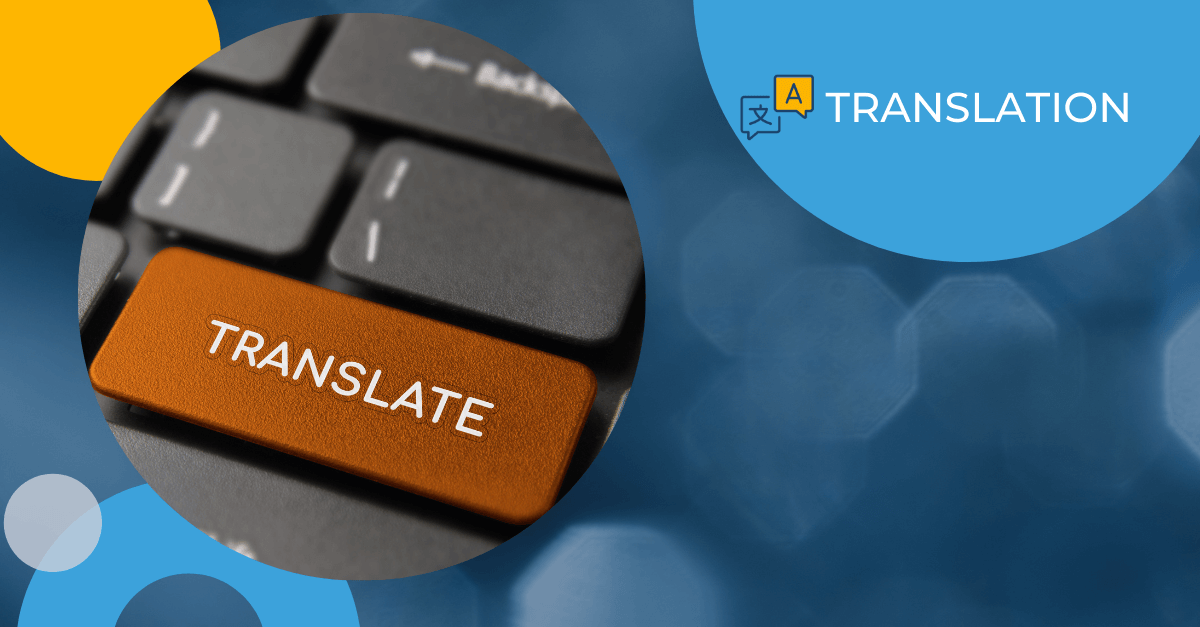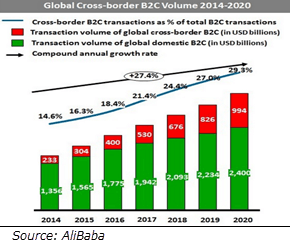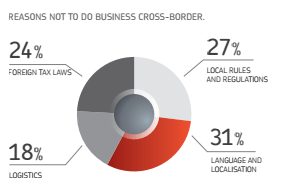Month: September 2016
Meet Morningside @ The State Bar of California’s 89th Annual Meeting!

Morningside is excited to sponsor The State Bar of California’s 89th Annual Meeting in San Diego. The conference kicked off on Thursday and will continue through Sunday October 2nd. As a leading legal translation provider, Morningside offers a full suite of language services for the legal industry including legal document translation, legal interpreting, multilingual document review and eDiscovery support. If you are attending, make sure to stop by Booth #416 to grab some fun giveaways and learn more about us!
We look forward to seeing you there!
Get the latest insights delivered to your inbox
Breaking Down the Language Barrier with Auto-Translation

While browsing the web, you may have come across a website written in a foreign language and attempted to use the ‘one-click’ translation function in your browser to instantly translate the text on the page. This is one way the ecommerce world has attempted to break down the language barrier with auto-translation.
Once the text has been translated, you were probably able to understand some of what the web page is saying, but many words or phrases likely made little sense. This is typical of end-users’ experience using auto-translation: it can be useful to get the gist of what a website or document is saying, but the quality is typically not very sufficient to get a clear understanding of what is written. What is worse is that vital information can easily be misinterpreted.
How does Auto-Translation work?
Auto-translation programs (such as Google Translate) work on a phrase by phrase basis, using a statistical algorithm to determine the meanings of words. In the case of Google’s translation tool, a back catalog of already translated texts is used. The algorithm analyzes the sentence against these texts to give the best result. The result depends on the quality of these translated texts, potentially leading to mistakes and awkward phrasing.
Auto-Translation of the Future
Auto translation technology is still in it’s infancy, with new technologies being developed and released regularly. The new technology we’re most excited about is the move towards neural machine translation (NMT). This approach to machine translation is structured in a similar way to the human brain and use complex calculations to select the appropriate translation. Unlike conventional machine translation, every component of the neural translation process is trained to maximize translation performance. Rather than simply translating the sentence word-for-word, this auto-translation technology can learn metaphors and idioms and their foreign language equivalents. This technology is still in its infancy, and represents a radical departure from standard MT approaches. If it proves successful, this technology will produce far more accurate translations and could render human translation a thing of the past.
Instant Translation Technology
The move towards highly accurate, instant machine translation would represent a significant step forward when it comes to communicating across languages. Both Google and Facebook are investing heavily in this new technology, which would significantly improve the user experience by providing automatic translation of ads as well as posts and messages.
Auto-Translation is not Foolproof
Currently, auto-translations are still not good enough to be used in professional settings. There are enough real-word examples of humorous and sometimes embarrassing translation mistakes on signs, product labels and menus around the world to remind us of the risks and potential fallout of relying on online auto-translation tools alone.
For the time being, in order to get a clear, accurate translation, your best bet is to have your document or website translated professionally by a native speaker of the target language. This ensures that the translation will be easily understood, culturally relevant, and avoid the misunderstandings and embarrassment that can result by using auto-translation software.
Get the latest insights delivered to your inbox
Are You Ready for Cross-Border E-commerce?

The global e-commerce market is growing rapidly and cross-border e-commerce is gaining an increasingly high share of total cross-border commerce over time. As shown on the left, Alibaba expects the cross-border e-commerce market to quadruple from $233B in 2014 to $994B in 2020.
The four most active cross-border e-commerce channels — both in terms of cross-border purchases and cross-border sales — are the US, the UK, Germany and China. Thus, for example:
- For German online shoppers, the UK is the most popular cross-border shopping destination (43%), followed by the US (33%) and then China (24%). German online merchants, on the other hand, sell mostly to France, Austria, Italy, Spain, and the Scandinavian countries. [1]
- 71% of UK online merchants offer cross-border delivery, with the US being the biggest cross-border trading partner (both imports and exports). [2]
- Cross-border purchases by China’s online shoppers grew from less than $2 billion in 2010 to more than $20 billion in 2014. With the Chinese middle-class expected to grow to 630 million by 2022, this trend is only going to increase. [3]
Despite the massive opportunity for increased revenue that cross-border e-commerce presents, there are also several unique and significant challenges that not all e-commerce merchants are willing or able to address. In a recent survey conducted by Payvision[4], e-commerce businesses that have not yet plunged into the cross-border market cited the following main reasons:
Although the world is becoming more and more of a global village, for the cross-border e-commerce merchant it is still hugely fragmented in terms of local consumer protection laws, customs and tariffs, and privacy and data protection regulations. But surprisingly, it is actually the language and localization issues that were the leading reason given not to jump on the cross-border bandwagon. E-commerce merchants are acutely aware that to compete in foreign online markets they must be able to present their products and provide customer care in the local language and in line with the local culture.
Though website translation & localization pose significant challenges, the potential ROI for e-commerce merchants is obvious. Morningside Translations has developed extensive expertise in localization and cross-cultural communications as it helps its customers do business around the globe every day. If you are considering expanding into the cross-border e-commerce market, contact us to see how we can help you make your cross-border e-commerce dreams a reality.
References
[1] Germany E-commerce Facts and Figures
[2] UK E-commerce Facts and Figures
[3] Fast Facts: China And Cross-Border E-Commerce, Alibaba, October 2015
[4] Key Business Drivers And Opportunities In Cross-Border Ecommerce: Entering an omnichannel world, 2015, Payvision
Get the latest insights delivered to your inbox
Crowdsourced Translation: Does it Work?

The World Wide Web has made it possible to communicate at all times, across all boundaries and on an unimaginable scale. The communication revolution lies at the root of trends that are changing how we go about our daily lives such as the sharing economy and crowdsourcing, crowdfunding, etc. But can crowdsourced translations prove as effective as traditional methods of translation?
The Origins of Crowdsourcing
Crowdsourcing is based on the premise that collaboration taps into a collective wisdom that is greater than the sum of its individual parts. As early as 2004 James Surowiecki eloquently argued that a diverse collection of independently deciding individuals with access to aggregated information will reach better decisions and predictions than could have been made by any single member of the group in his seminal book, The Wisdom of Crowds: Why the Many Are Smarter Than the Few and How Collective Wisdom Shapes Business, Economies, Societies and Nations.
According to Crowdsourcing Week, “…crowdsourcing is the practice of engaging a ‘crowd’ or group for a common goal…Thanks to our growing connectivity, it is now easier than ever for individuals to collectively contribute — whether with ideas, time, expertise, or funds — to a project or cause…”
Crowdsourced Translation for Social Media Content
In general, crowdsourced translation falls into two main categories: translation by a “true” crowd, i.e., non-professional translators (such as Google Translate users correcting automatic translations) and translations by a “crowd” of professional translators working on crowdsourced translation service platforms such as TM-Town, Gengo, Smartling and others.[3]
The rise of social networks has created both a need and a platform for real-time translation of user-generated content in order to support communication on a global scale.
An interesting example of mobilizing a “true” crowd for social media translation is Facebook’s very recent introduction of a new feature that helps people post Facebook updates in multiple languages. The user can either write the translations from scratch or edit text that Facebook’s translation software generates from the original post. With more than one billion people using Facebook every day, this crowdsourced translation feature will provide Facebook with valuable new data to improve the ability of its translation software to convert slang and other informal language from one language to another (the holy grail of machine translation!)[1].
An example of mobilizing a crowd of translators to provide real-time translation of social media posts on a massive scale is Stepes’ recent launch of its Twitter translation API, which leverages the company’s mobile translation platform to translate and repost translated tweets to designated accounts. Customers sign up for the translation service via their Twitter accounts. The API extracts the tweets to be translated and sends them to Stepes’ network of ~50,000 translators who translate-on-demand anywhere and anytime from their smartphones. The cost to translate is ~10 cents per word and customers can set daily spending limits.[2]
Does Crowdsourced Translation Capture Collective Wisdom?
On the one hand, crowdsourced translation – whether by non-professionals or professionals – is quick, scalable and relatively inexpensive. But in the case of crowdsourced translation by non-professionals, who’s to say that their translations are good or that they won’t abuse the platform to teach the system false translations? Thus, for example, Facebook itself has announced that it doesn’t automatically start using new translations picked up from user data. It relies on professional translators to verify that the crowdsourced translations are correct. [1] There is little doubt that crowdsourced translations are far more vulnerable to mistakes and mistranslations than professional translation, and could prove risky if used in a professional or business setting. [3] On the other hand, a hybrid process like the one implemented by Facebook where professional translators oversee the crowdsourcing process and verify that the resulting translations are accurate could prove effective.
So does crowdsourced translation work? The truth lies somewhere in the middle. Indiscriminate, uncontrolled crowdsourced translation is unlikely to produce quality translations in a reliable and consistent manner. But platforms that encourage professional translators to share knowledge and collaborate can most certainly create collective wisdom that will drive professional translation to ever higher levels. And crowdsourced translations working in tandem with professional translators can potentially provide decent quality faster and at a lower cost that professional translation alone.

